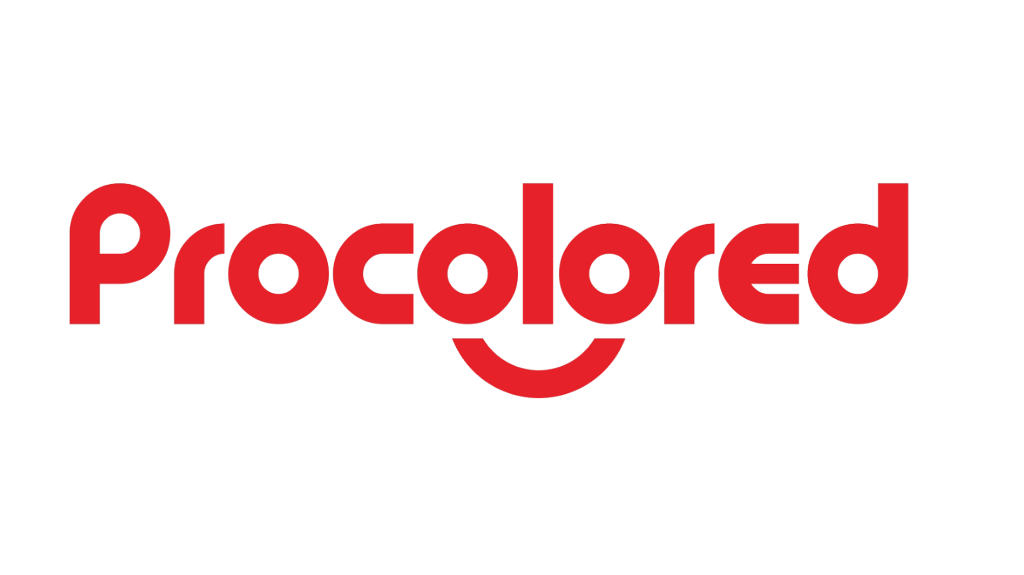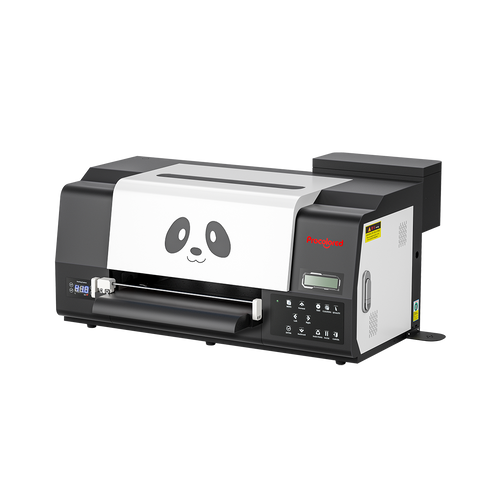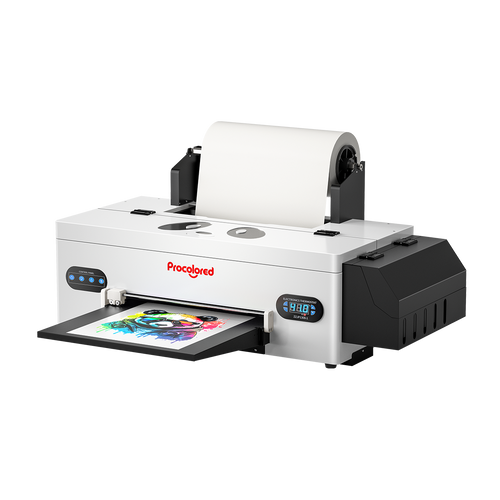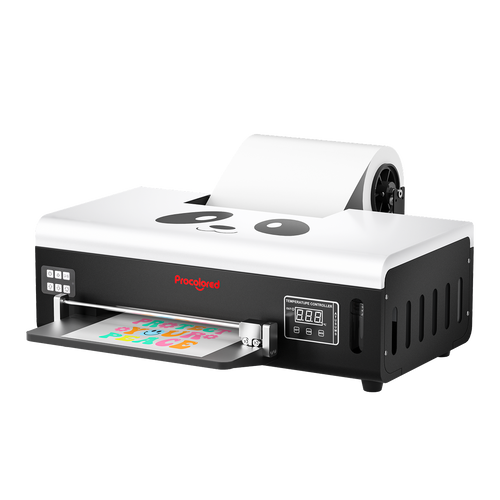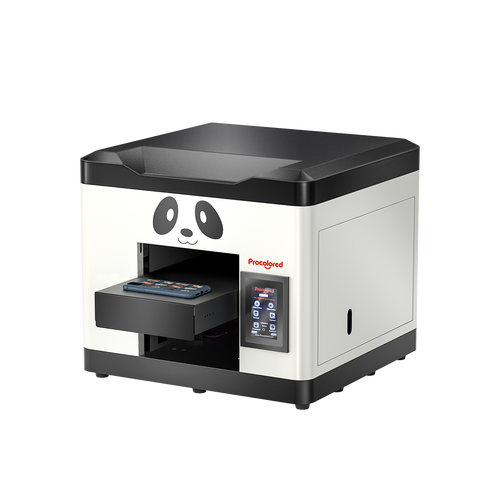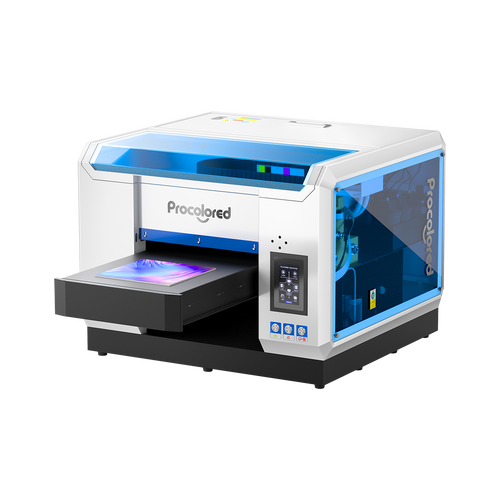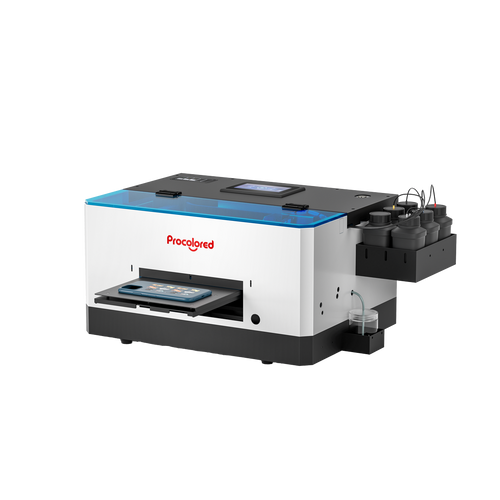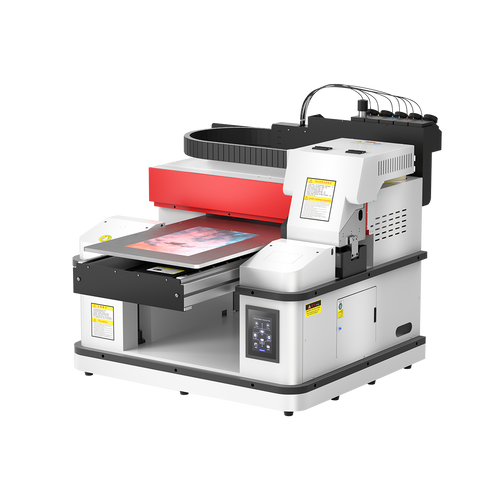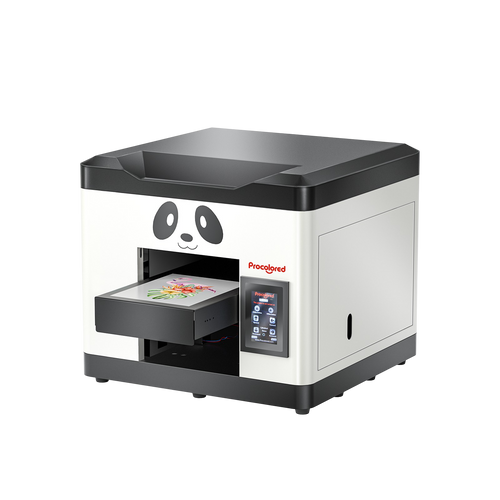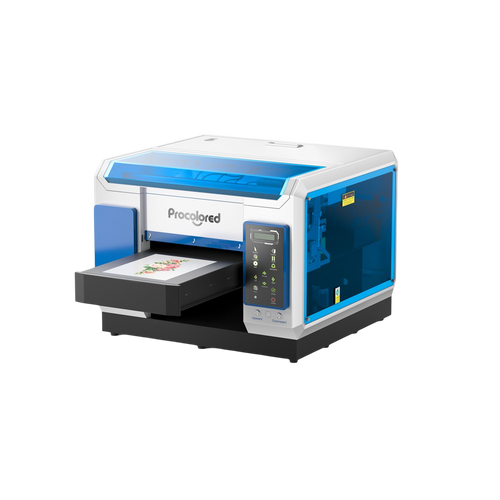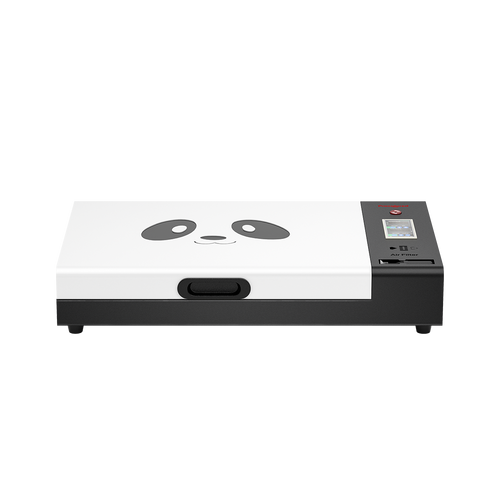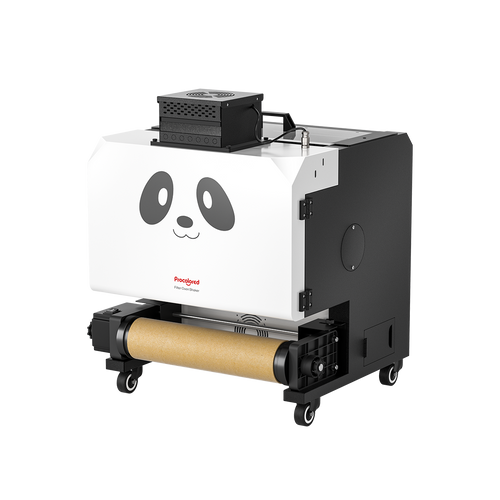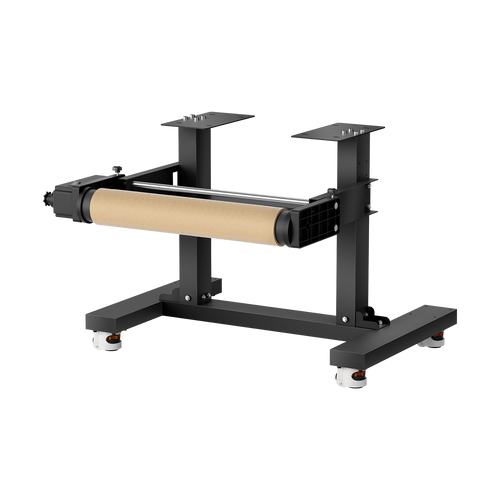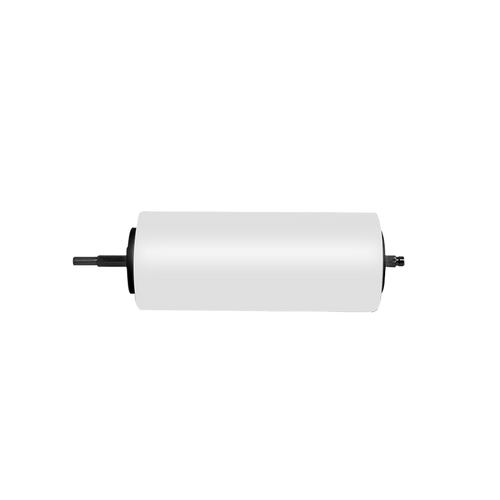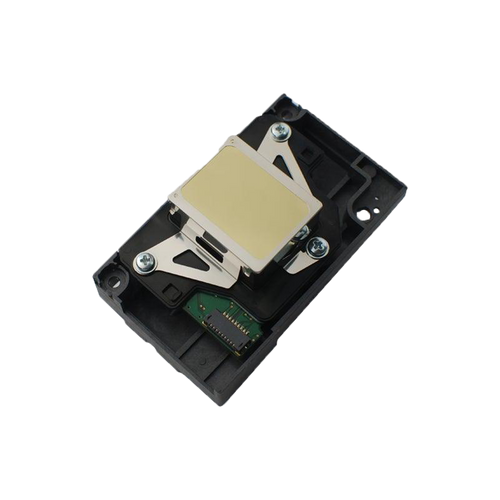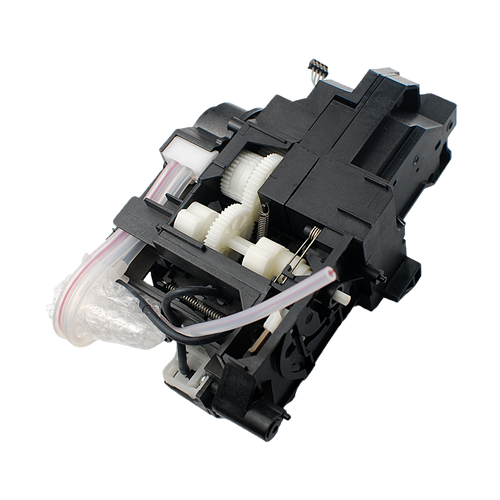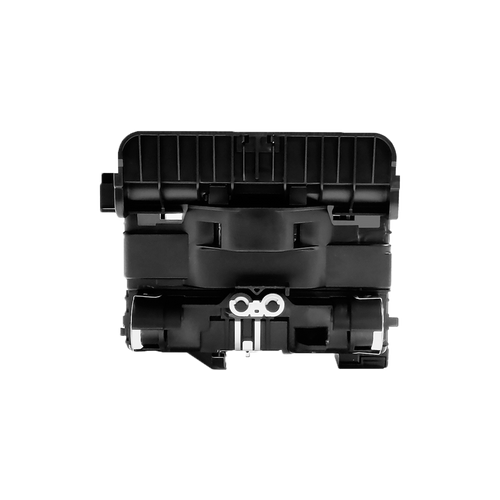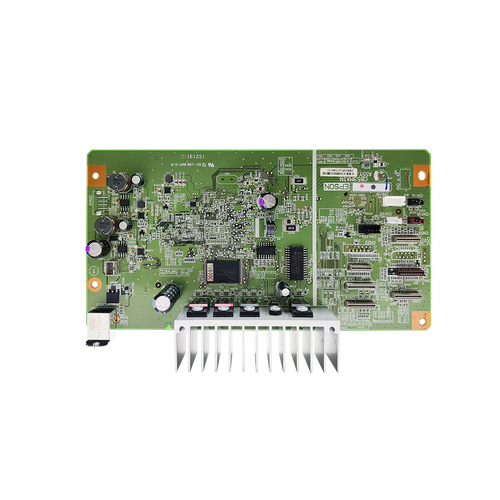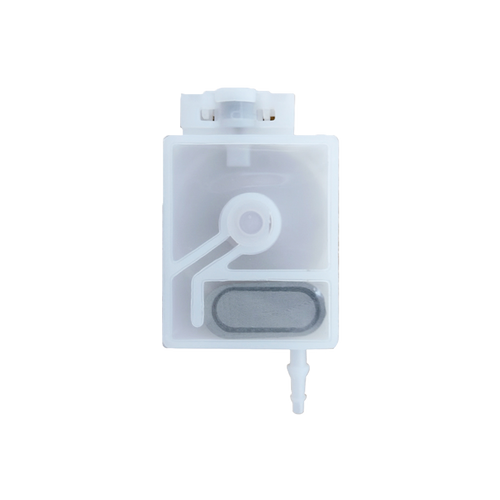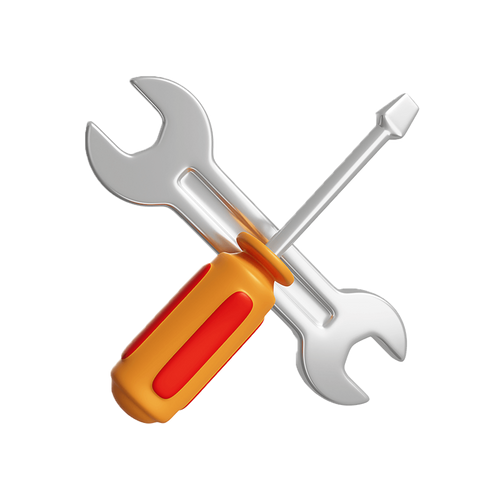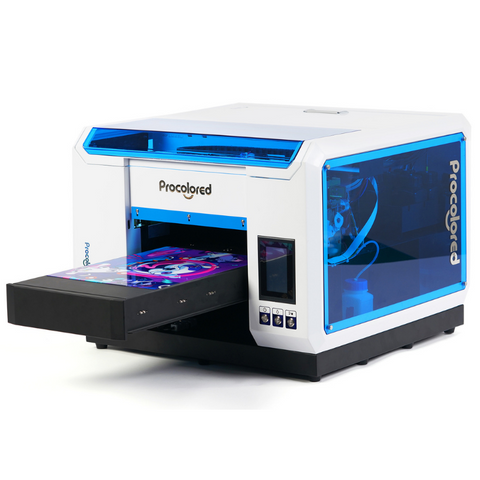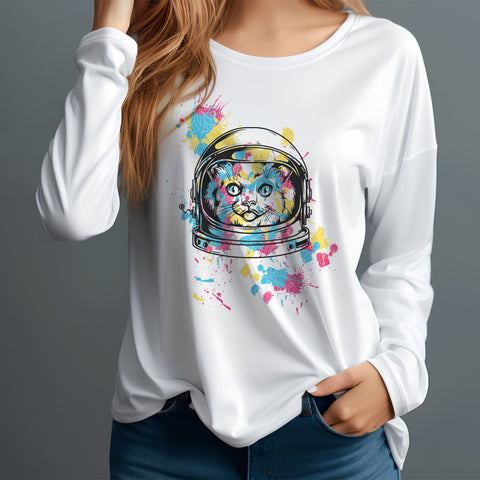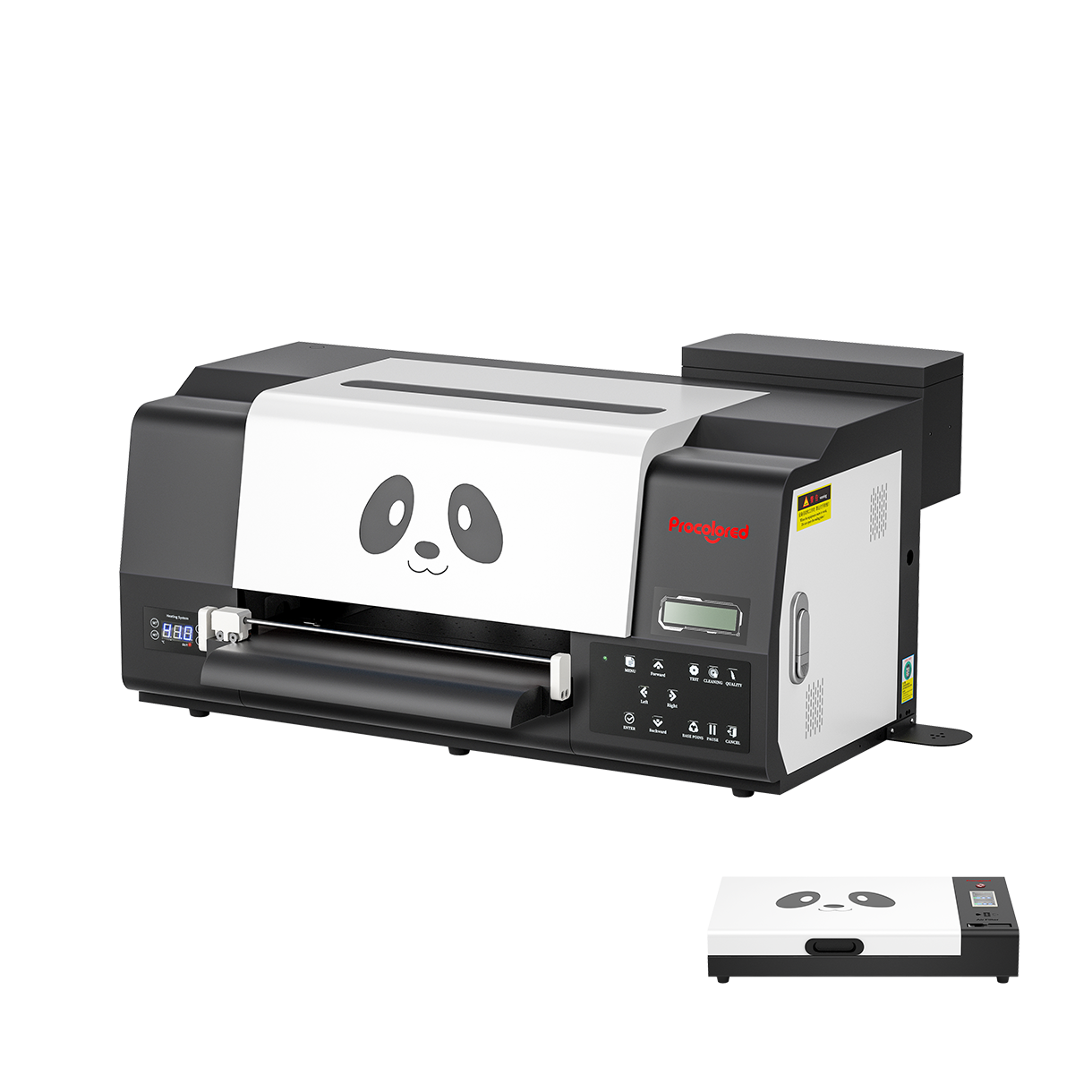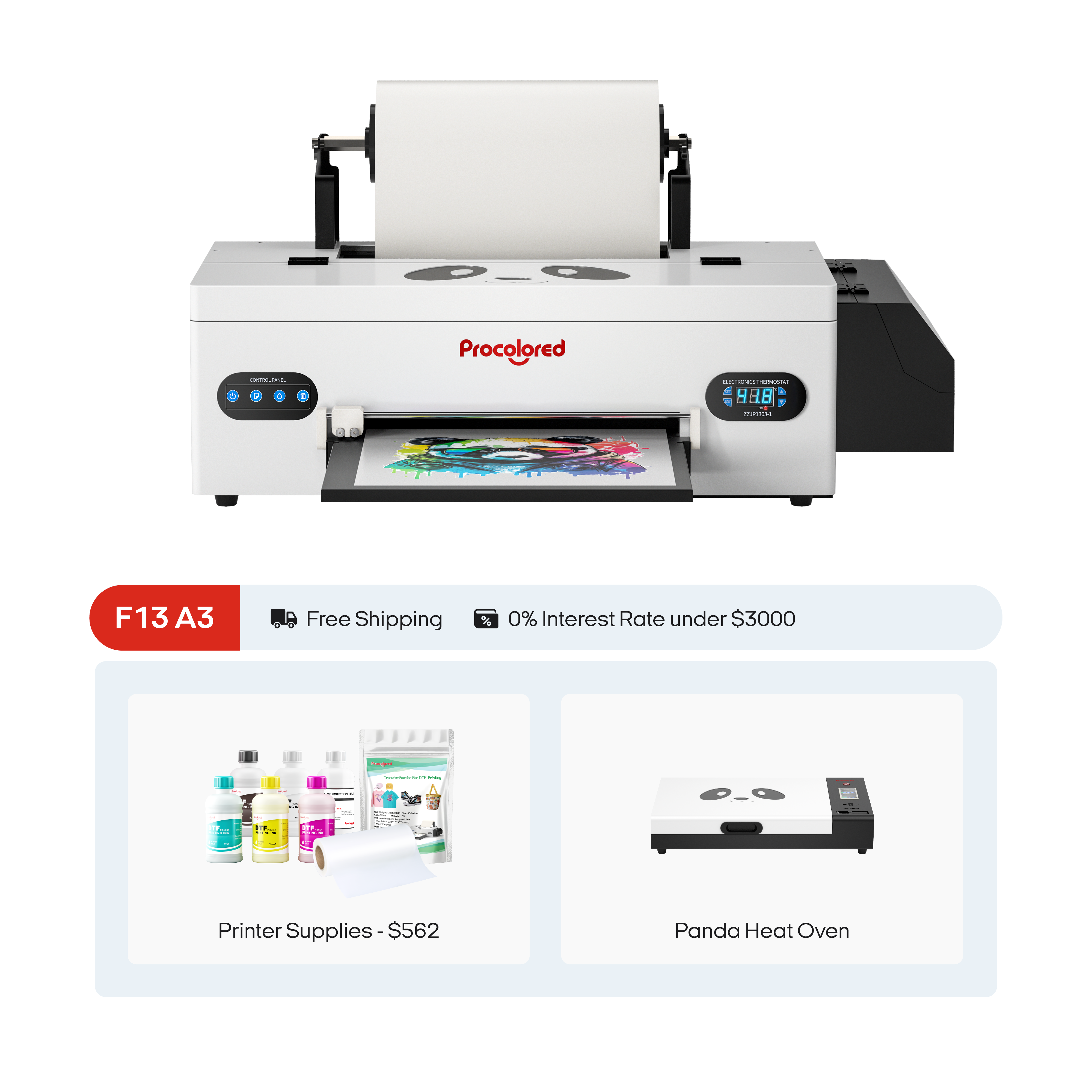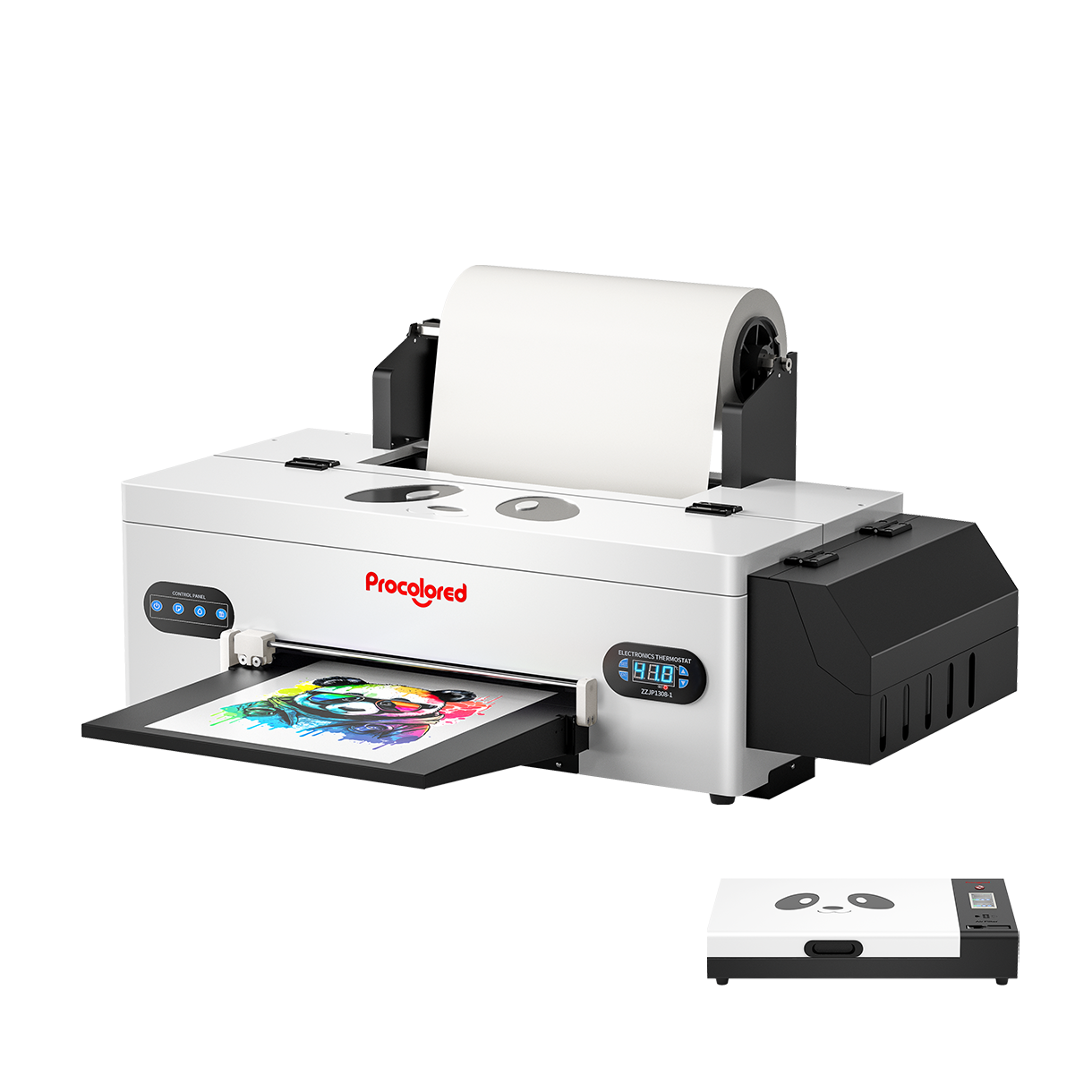Working Principle of UV Printers
A UV printing machine applies a new and unique digital printing technique that utilizes UV light to cure the special ink when the ink touches the substrate. The UV ink dries instantly when it’s exposed to UV light, so there’s almost no ink absorption of the substrate. This technique endows flatbed printer a tremendous advantage over conventional printers because conventional printers only allow ink to dry naturally on the paper, which means they can’t print some other substrates such as metal, wood and so on as the ink won’t dry on those substrates. While UV printers overcome this problem and can print on almost all substrates.
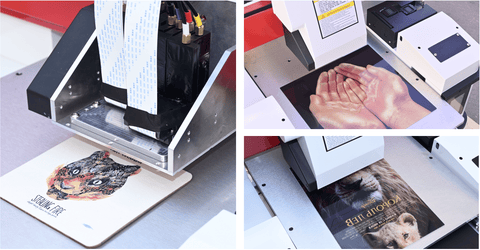
Although UV printers pioneered another field of printing, people still ask what is a UV printer used for? Indeed, people could barely see a UV printer working in front of them but things printed by UV printers are everywhere around us. You can simply regard it as a printer on wood. UV printing on acrylic, custom phone cases, labels and packaging with custom words or designs, home decorations like wallpaper and ceramic tile with special patterns, mugs, etc, all of them can be printed by UV printers. UV printers allow the customer to experience the joy of customization and offer a higher level of user experience than average printed products. Procolored is the best UV Printer Manufacturer.

Classification of UV Printers by Print Beds
The print bed is where the printed item is transported into the UV printer (compare the differences of a uv dtf printer).
Flatbed UV Printer
The flatbed UV printer offers a flat platform, which is the ideal choice for printing on substrates with flat surfaces such as phone cases, nameplates, cards, etc. The printed item will be fed into the UV printer for printing a single side of the item and backed out when finished.
Some of the UV printers provide a suitable sized platform for installing jigs, enabling you to place and fix special items on it which fits within the max printing area and height of the printer, such as cylindrical jig, mug jig, and so on.
Rotary UV Printer
The rotary UV printer is designed specifically to print directly on cylindrical objects with 360- degree coverage including bottles, glassware, cans, etc. Additionally, it works on both straight-walled cylinders and tapered objects, allowing you to accomplish a variety of tasks and meet changing needs.
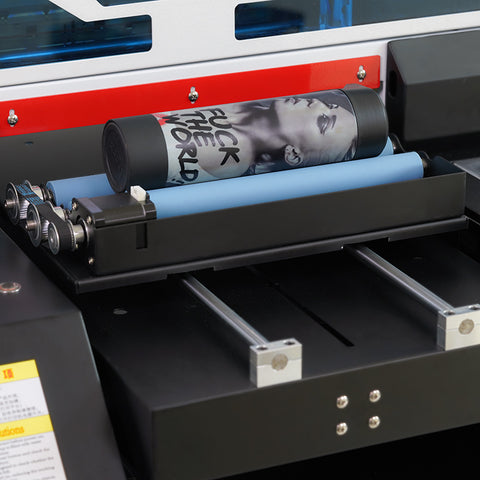
UV Printer with Conveyor
The printing method of UV printer with conveyor has something in common with UV printer flatbed. That is, they both feed the substrates to the printhead. The difference is that the UV printer with a conveyor will not return the printed item to the operator. Instead, they are continuously fed through the printer and collected on the other side. The UV printer with conveyor is very suitable for high volumes production as the machine applies continuous feeding to enhance working efficiency.
Roll to Roll UV Printer
This kind of UV printer provides another solution for printing on flexible and soft surfaces like textiles, paper sheets, and so on. The roll to roll UV printer prints directly onto the roll of textile. In this process, the tension of fabric/textile is adjustable and doesn’t wrinkle with an even feeding speed.
Main Components Introductions
Printheads
Printheads directly determine the printing accuracy, stability and printing effects. That’s the reason why printheads are some of the most essential and critical parts of a UV printer. The printheads is installed with nozzles and ink sacs. With the support of the software and ink supply system, printheads will print out the input patterns, the final printing effect is depended on many factors, such as how you set up the software, the quality of the printheads, printing speed and how many colors the ink supply system can provide.

UV Curing Light
The core function of UV printer origins from the UV curing light, which is curing the ink at the moment it hits the surface of the substrate so that the ink dries instantly. This function ensures every printed item is completely dry when it comes out of the printer. This feature also distinguishes a UV LED printer from a conventional printer which only allows the ink dries naturally. It is also used on UV DTF technology. Explore the differences between UV printing and UV DTF transfers.

Platform/Print Bed
The platform or we say print bed, is where you place or fix the substrate. As introduced above, a user should choose the UV printer with a suitable print bed that exactly match their applications and purposes. The UV flatbed printer is suitable for substrates with flat surfaces. The rotary UV printer is specially designed to print on cylindrical objects. The roll to roll UV printer is an ideal choice if you mainly print on soft and flexible substrates. If you focus on the mass production field, you should consider a UV printer with a conveyor.

Sensors
Different sensors are installed in different models of UV printers. It depends on customers’ needs and the application of a UV printer. Some common sensors in a UV printer are the infrared automatic height adjustment sensor which is designed to measure the height of the substrate and adjust the gap between the platform and the printhead automatically. An ink cartridge sensor is developed to detect if there’s still ink in the printer.

Air/Water Cooling System
Just like the computer host is equipped with an air cooling system to cool down the CPU, a UV printer also has its cooling system. Some UV printers are installed with both a water cooling system and a air cooling system, but others are just installed with either one to prevent the UV lamp from overheat. Checking if the cooling system works in every printing is highly recommended. And if a UV printer is equipped with a water cooling system, you’d better check if there’s enough water in it.
Pros and Cons of a UV Printer
Pros
- UV printing is more environmentally friendly as ink evaporation is minimized, and there’s little emission of VOCs(volatile organic compounds) into the air compared to traditional printing.
- Production efficiency is improved. UV ink dries at the moment it’s exposed under UV light, so there is no ink evaporation process and you don’t need to wait for the ink to dry, which saves more producion time.
- UV printing allows you to create special looks for the items. With the UV varnishing feature, the printed pattern looks more luxurious and professional. And the experience of tactile impression is totally different from other printing methods.
- The printed pattern is more durable and scratch-resistant. The work is protected from smudging and abrasions thanks to the UV coating.
- A UV printer can print on a wider range of materials and surfaces, offering you more flexible printing choices than a conventional printer. Additionally, UV printing can guarantee printing clarity, accuracy, and color saturation.
Cons
- UV ink is corrosive and users should be cautious about it.
- UV ink is more expensive than other types of ink because of the features of high-resolution printing effect and fast drying.
- Only flat and uneven items with a drop of less than a certain degree can be printed. If the drop of an object exceeds a certain degree, there might be a distortion of the printing effect.
Applications
Since UV printers are so powerful and multifunctional, people will naturally think of two questions: what can you print with a UV printer and how do you make money with UV printers?
The answers are as followed:
Home Decoration
A UV printer can be used to print on ceramic tile, wallpaper, wall paintings, glass sliding doors, wardrobes, and so on. The customized decoration style will definitely capture consumers' eyes and improve quality of life and experience.
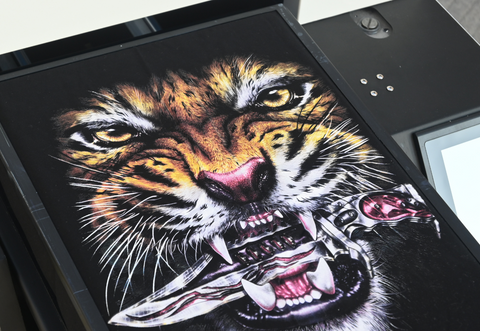
Advertisement
Since traditional printers mainly print on papers, they couldn’t meet the changing demand for advertising. However, UV printers overcome the shortage of traditional printers, they can print on almost all substrates. Billboards, wood, acrylic, posters signage, nameplates, labels, glass, and fabrics are a piece of cake for UV printers, which exactly match the requirement of advertisers.
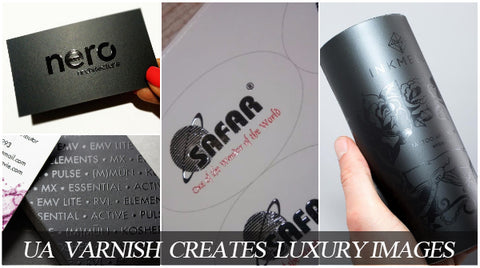
Product Design
Designs of Phone cases, bottles, product boxes, packaging bags and so on rely heavily on UV printers because UV printers offer a variety of printing patterns. Attractive patterns on the products and the packaging bags sometimes strongly stimulate their desire to learn more about the product so that they are more likely to place an order.
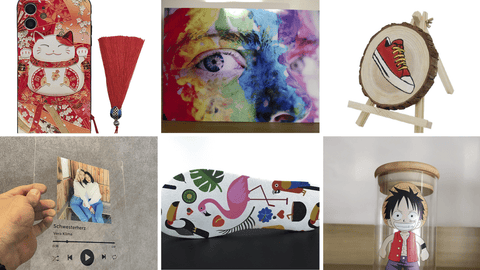
Advanced Printing Service
Some users with special printing purposes may turn to UV printers because their clients are more considerate, pickier and have a strict requirement of painting. So, before placing an order, they will hesitate due to two basic questions in mind: how good is UV printing? Is UV printing permanent?
Firstly, patterns created by UV printing is anti-scratch, less likely to fade and scuff. The colors of the patterns are sharper, clearer and more vibrant.
You can say UV printing is permanent. Thanks to UV ink and UV printing technology, the printed patterns are abrasion, chemical resistant, and more durable under extreme conditions. It can’t be washed away by water, alcohol, or any other chemicals.
These are just two of all the merits of UV printing. What a UV printer can achieve is beyond your imagination.
How much is a UV Printer?
The price of a decent and fully functional UV printer for sale ranges from about $1500 to over $50,000. The price is determined by factors such as printer size, functions, platform(print bed) size, quality and quantity of printheads, etc. It’s possible to choose a suitable UV printer that matches your requirements within the budget plan. We also recommend you to take other costs including the initial price of a UV printer, jigs and UV ink, etc into consideration before running your printing business without tremendous financial pressures.
Why a UV Printer is Expensive?
Size
Generally, large size UV flatbed printers for sale are more expensive than small UV printers or home UV printers because large size UV flatbed printers are usually used in the mass production field which has high requirements for performance, production efficiency and printing quality. These will definitely push the price up. It’s advised to figure out the positioning of your business before purchasing a UV printer of a certain size.
Printhead
There are mainly two types of printheads in the market, Epson and Ricod.
An Epson printhead is relatively cheaper than a Ricod’s. While Ricod printheads offer 1-2 years service life, which is longer than Epson’s 6-14 months.
Prices of different models of printheads vary greatly. For example, an Epson printhead DX5 is $700 more expensive than L1800 printhead. The price of a UV printer will be more expensive if it’s installed with multiple printheads. Since the printhead takes up a large portion of the cost, people can’t help asking: how fast are UV printers? The printing speed varies from 3 to 5 m2/h, it depends on the printhead model and the printing DPI or resolution. Learning more about printheads and choosing suitable ones can not only make the most of your budget but also meet your requirements.
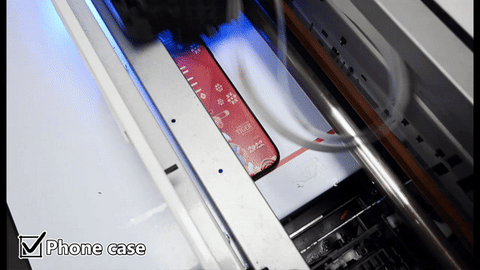
Functions
The more functions a UV printer supports, the higher the price. Some popular features are very time-consuming to research and develop, such as infrared automatic height adjustment, white ink automatic circulation, adsorption filtration function, etc. Manufacturers spend lots of money on those function in order to stay competitive in the market, but they have to sell them at a higher price to cover the costs in return.
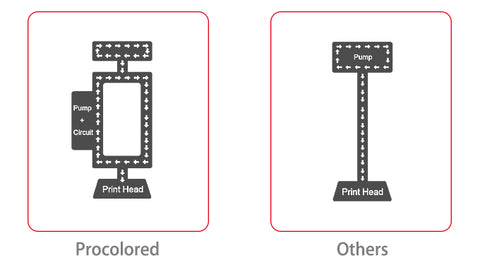
Things You Need to Consider Before Buying a UV Printer
Production Demand
For factory owners or clients with mass production needs, larger size UV flatbed printers may be your first choice for the reason that they are high-performing to guarantee your high-volume orders are completed on time. If you are a small business owner who has a more flexible time to deliver orders, small or medium size UV printers are a cost-effective choice and save you lots of space.
Size
Even a small/desktop UV printer will take up significant space. Fortunately, most sellers online provide the dimensions of a UV printer so that it’s convenient for you to measure if there’s enough room to settle the UV printer.
Performance
Choosing an affordable UV printer with a certain level of performance according to the needs of your clientele will save you money because you don’t need to pay for extra functions or performance that you don’t even need. For instance, if a client placed a high-volume order with strict requirements on image clarity and resolution, then a UV printer with a large print area and high-performance printheads is needed.
Ink and the Cost
It’s worth mentioning that you should also figure out what type of ink a UV printer uses. The special ink used by UV printers is UV ink, which is developed from a unique formula. This formula determines the following characteristic of the UV ink:
- Highly responsive and sensitive to light.
- The patterns printed with UV ink are more durable, waterproof and chemical resistant.
For these reasons, UV ink is more expensive than other types of ink. So you should calculate carefully the cost of UV ink you consume to control the total cost of your business.

